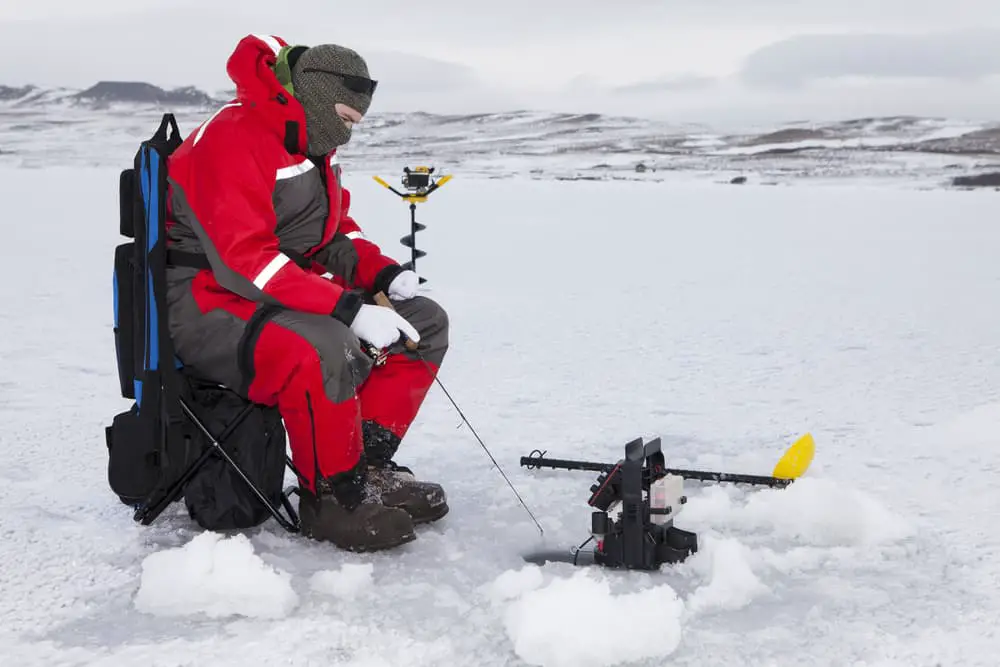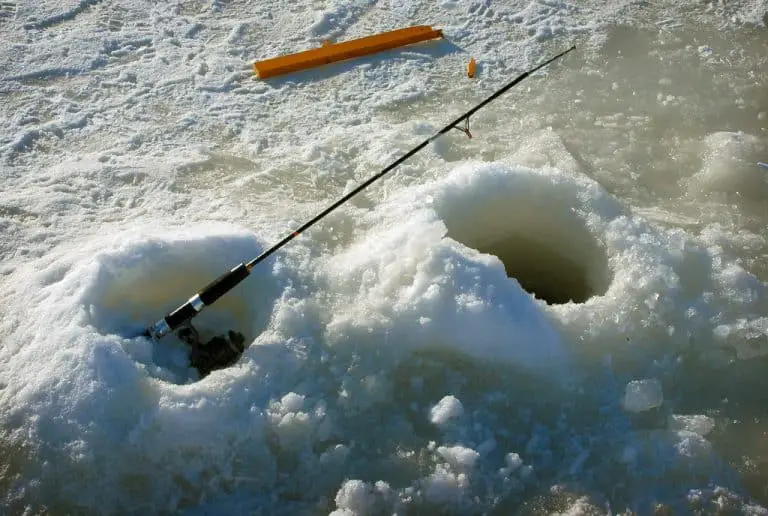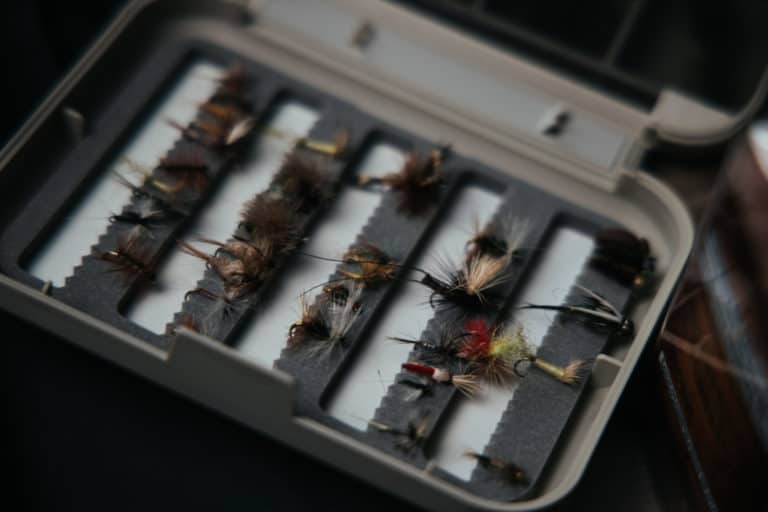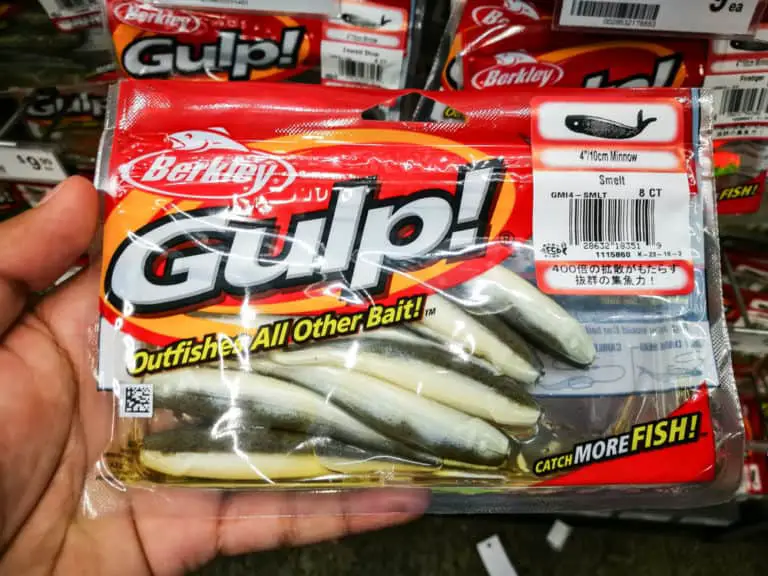How To Use A Flasher While Ice Fishing?
Ice fishing can be a lot of fun, especially because it adds a different kind of challenge, with a beautiful but difficult setting and terrain.
Luckily, there are plenty of gadgets that have been specifically designed for this type of fishing. So venturing out onto the ice isn’t that much of a problem!
One of the best tools to use when ice fishing is the flasher. This is a device that uses sonar, to then display useful information on the screen.
It displays the objects that are detected in the water column, on a circular screen, and it allows you to monitor the depth, as well as the fish activity in relation to the lure you have in place.

So basically, it lets you have an idea of what is going on beneath the ice, in the water, which comes in super handy because you don’t exactly have visibility when ice fishing.
The device is incredibly useful, and can up your ice fishing game by a lot. However, to most beginners, it can seem pretty complicated to use, as there is a lot to understand. And even those that are more experienced might still not be using the device to its full potential, so this is an article for all!
Here, we will explain exactly how to use a flasher while ice fishing, in a few simple steps that should be easy enough to follow. If done correctly, you should then be able to use your flasher no problem whatsoever, and focus on the fishing!
Table of Contents
How to use a flasher while ice fishing: step by step
1. Drop the transducer
Once you’ve plugged in the battery and turned the flasher on and made sure that it’s in working condition and all that, you start off by dropping the transducer down the ice hole.
It’s important to make sure that it sits below the bottom edge of the ice, especially in older units, to avoid the signal from bouncing off the ice, as this could interfere with the picture you get. (However, newer units are often a lot better at reading through the ice, so you won’t need to worry as much)
2. Set the range
The next step is setting the range of the sonar, and depending on the model of the flasher, it can go from 1 to 240 feet of water. For the best reading, set the bottom depth at the next deeper range, so for example, if the actual depth is around 27 feet, set it to 30 feet.
If your sonar unit is more modern, it should have GPS mapping software and should pretty much know how deep it is, from the area you are in.
3. Adjust the gain
Next, you will have to adjust the gain. This is essentially the amount of power that the transducer emits, and it controls the sonar signal. The deeper the water, the more gain you need, so that the sonar reaches all the way down.
Turn the gain up until there’s lots of interference, and then slowly lower it until the screen is clear. That is the right gain setting.
4. Zoom in
You can then zoom in on the section of the water column that is the most likely to have the most fish so that you’re looking at where the activity is going on.
So for example, in 28 feet of water for bottom-dweller fish, zoom in on the bottom 10 feet, so that you’re focusing on where the fish will be. Each flasher’s zoom works a little differently, so check your manual of instructions for this step.
5. Start jigging
Finally, once everything is set up and ready to go, you can drop your lure down. You should be able to see it on the screen, like a bar. You can keep adjusting the flasher until the lure is a solid thin line, with no flickering.
Now you’ll be able to see where it is in relation to the fish activity, and guide it towards the best possible catch!
And that’s pretty much it! It can take a few tries to get used to the system, and there’s a lot of fine-tuning involved until you get it just right. But always double-check the manual, and just keep trying until you succeed.
How do you use a flasher fish finder for ice fishing?
Using a flasher fish finder is one of the best ways to increase your chances of success when ice fishing, as it makes up for the lack of visibility, and even gives you more insight, in real-time.
Essentially, when you hook it up and it’s working, the flasher fish finder will display a column of water, at its different depths, and will use different color codes to indicate different levels of fish activity. So when you look at your flasher fish finder, you can easily pinpoint where the fish are, and at what depth.
Then, as you lower the lure, it should also display on your flasher fishfinder, as a thin line. You can see it going down in real-time, and can monitor how the fish respond to it. And when the fish join up with the lure line, you can expect to feel a pull and to reel in a catch.
So basically, instead of waiting blind, with no clue of whether the lure is even close to fish or not, you know at all times where the fish are, and if they are moving towards the lure.
Do you need a flasher for ice fishing?
Technically, the answer to this question is no. You do not need a flasher in order to go ice fishing, and you can still catch fish perfectly fine without the use of a flasher. In fact, the use of flashers is a more recent addition to fishing, and fishermen have been doing just fine without it.
However, a flasher can be incredibly useful, and it makes ice fishing a lot easier. It allows you to see the structure of the water, so you can pinpoint rocks, debris, and more. And it also allows you to pinpoint at which depth the fish activity is, and allows you to monitor the lure and whether fish respond to it.
Why is a flasher better for ice fishing?
When it comes to fishing, the best two devices to help you out are flashers and fish finders. As a general rule, flashers are considered to be better for ice fishing, but why is that?
Technically, both devices do the same thing, they show you the depth, the fish activity in real-time through sonar, and they monitor your lure. The main difference is the display.
So while the fish finder is an easy display, simple to interpret, and ideal for all levels of fishing, the flasher is a lot more complicated but can show a lot more detail.
You can zoom in to see every single bit of the structure beneath the water, and you can get a lot more information about the fish, from the size to how they look at the lure.
If you’re experienced enough and you’ve mastered the skill to properly interpret the flasher, so that it is actually useful to you, it is a lot better for ice fishing because it gives you a lot more information and allows you to make more calculated decisions, down to the tiniest detail.




![7 Best Ice Fishing Bibs [Reviews & Buyers Guide]](https://watersportingadventure.com/wp-content/uploads/2020/10/Ice_fishing_December_Zanderland_Finland-e1606491519613.jpg)

